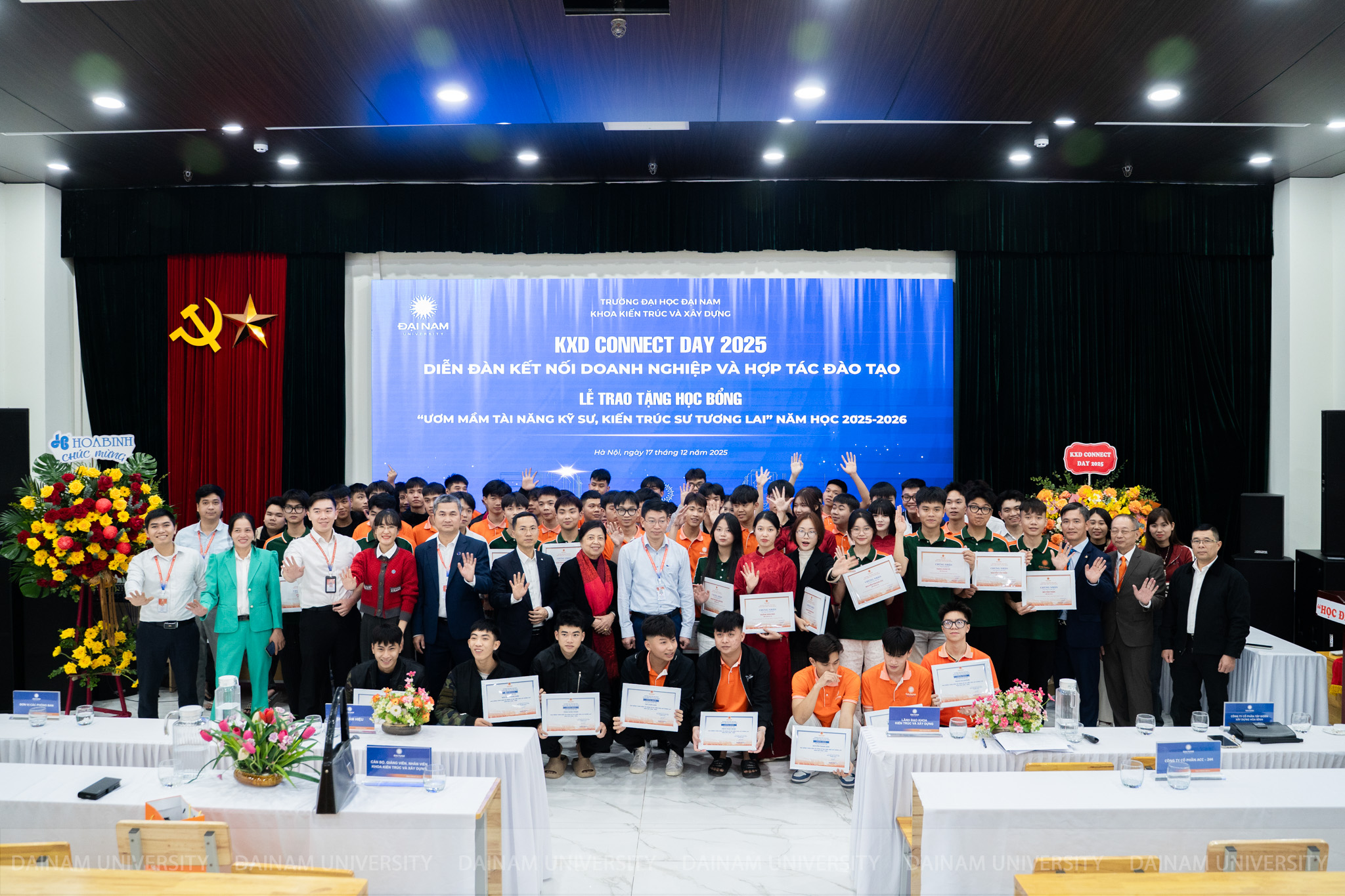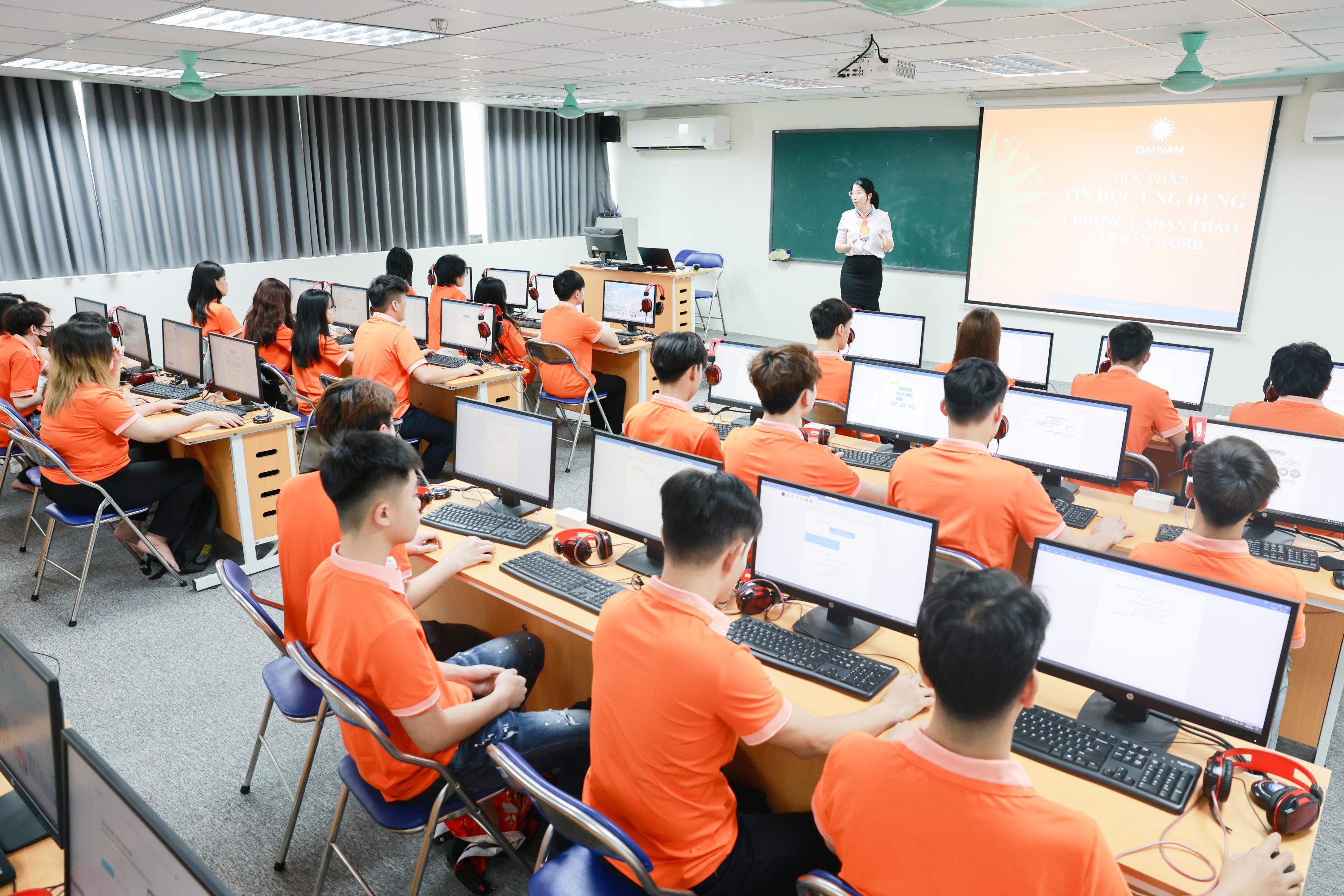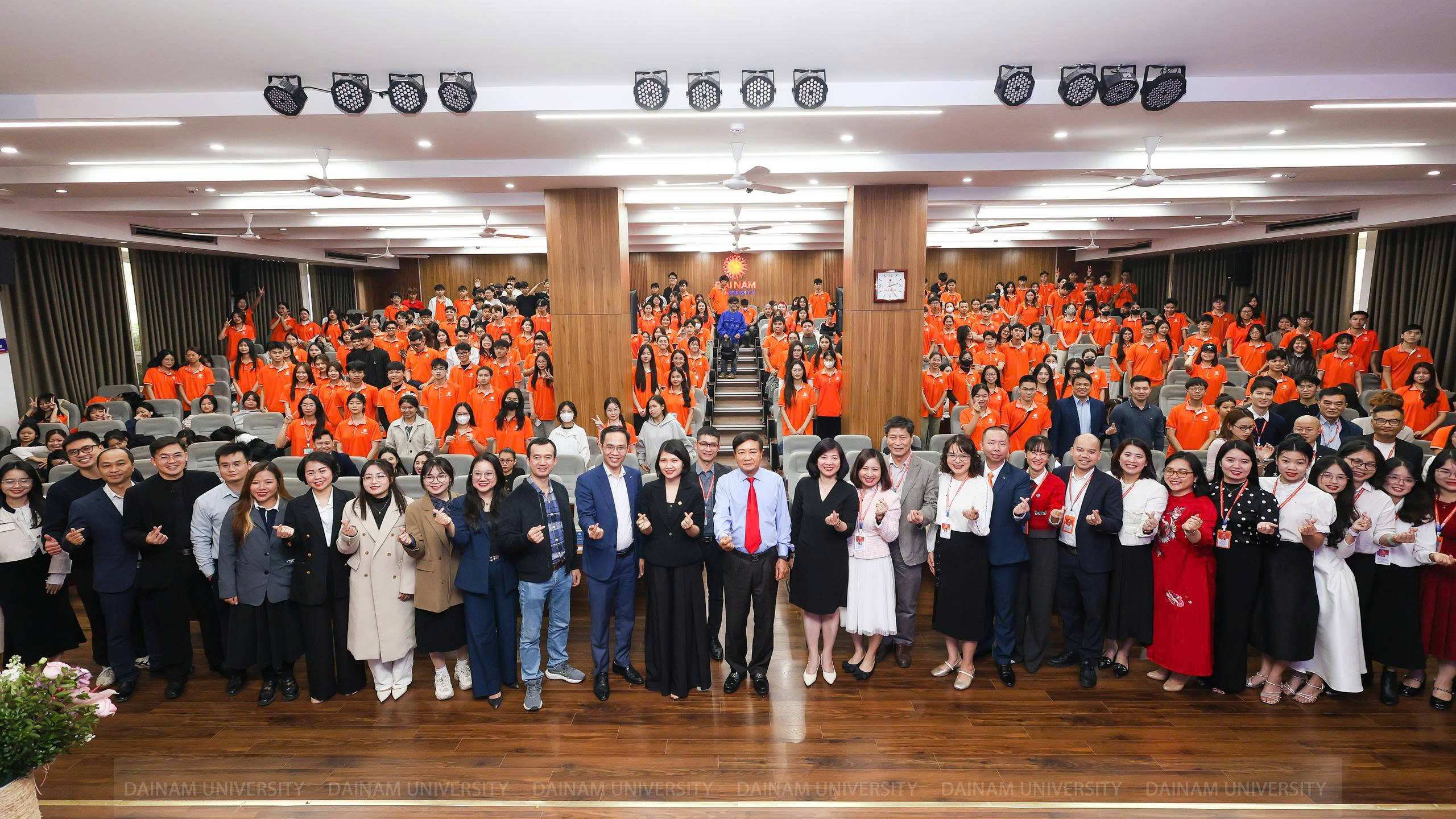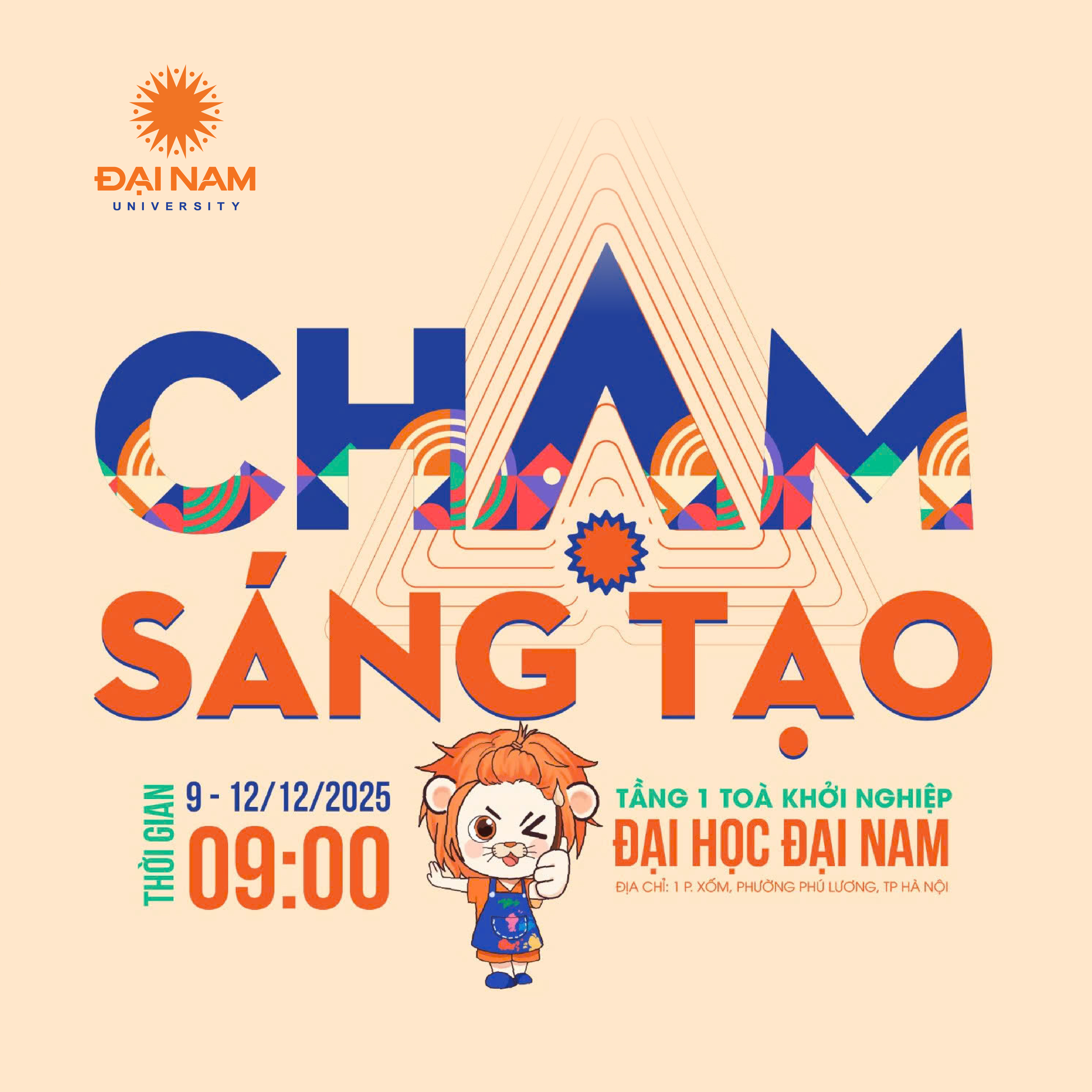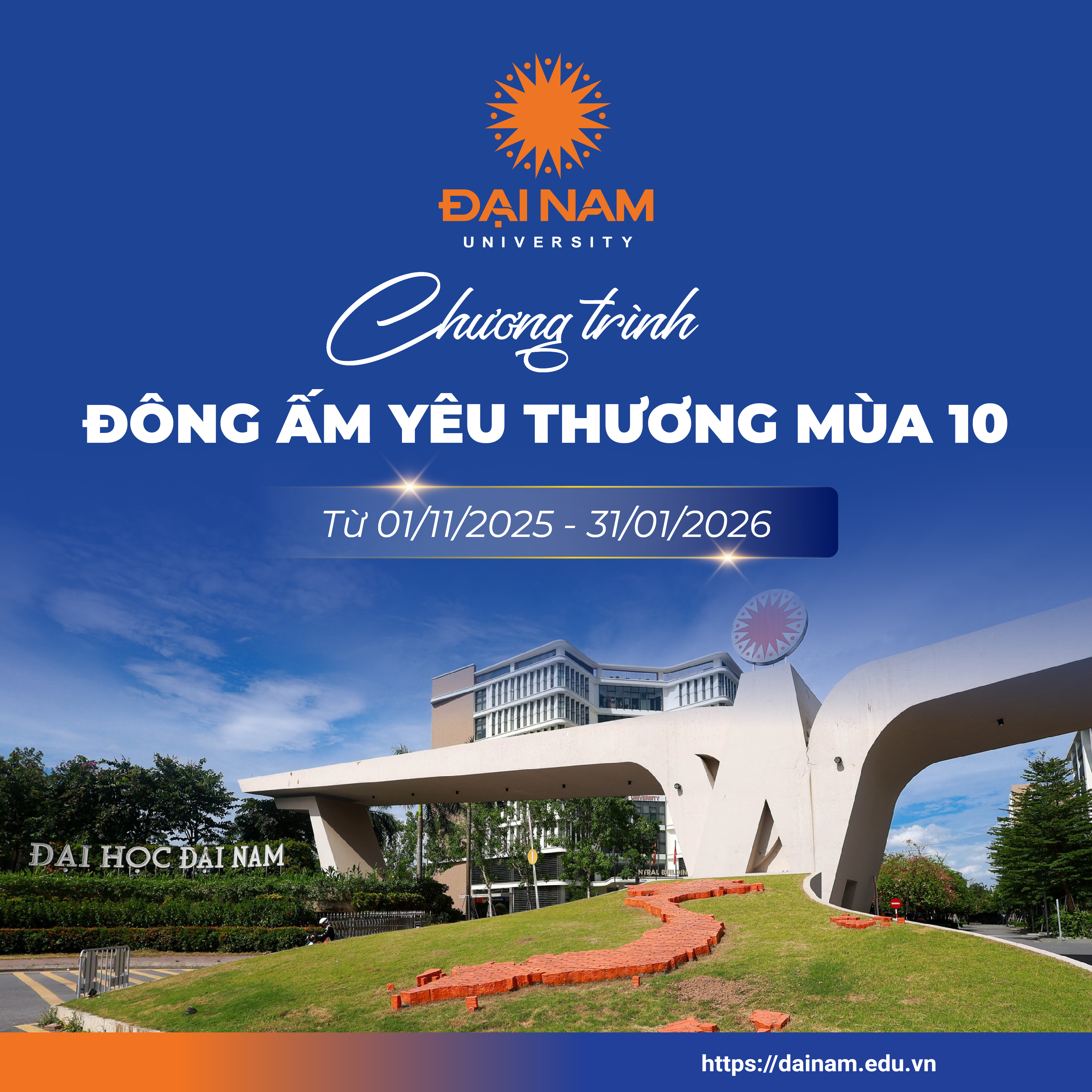Development Strategy of Dai Nam University to 2025, vision 2030
I. MISSION, VISION, EDUCATIONAL PHILOSOPHY, CORE VALUES
1. Mission
Dai Nam University provides knowledge for students to develop comprehensively, training according to the needs of society. Teachers and students are dedicated and contribute to the construction and development of a strong country.
2. Vision
Dai Nam University is a university providing multidisciplinary training services with the core training axis being community health protection and care. The school develops in an applied direction. By 2025, Dai Nam University will become:
- The training address is highly trusted by society for its training quality "learning linked to real life".
- Achieved important achievements in research and technology transfer in the field of science to protect and care for community health.
3. Educational philosophy
“Learning to change” is the school's educational philosophy.
Society is constantly moving and changing under the strong influence of knowledge. Science and technology are developing extremely rapidly, requiring each person to continuously learn to adapt for a living and the pursuit of happiness. Learn anytime, anywhere to have enough knowledge to change your thinking, change your way of working and change your life.
4. Core values
Accumulating social trust
- Quality & efficiency: The best training quality suitable for the learners' contribution cost.
- Dedication & Contribution: The spirit of dedication and passion for work creates the noble values of the staff, lecturers and generations of students of Dai Nam University.
- Integrity & respect: Honesty and uprightness in professional expertise and lifestyle, respect for human dignity, respect for the law.
- Individual talent & collective intelligence: Every breakthrough success originates from individual talent creativity, but the key to ensuring success is collective intelligence and solidarity.
- Inheritance & creation: Innovation for sustainable development on the basis of inheriting traditional values.
Development perspective
Sustainable development on the foundation of "Dai Nam University's common home"; Each person for all - all people for each person is the responsibility and happiness of each member of the University.
The conscience motto of the staff and lecturers is: We will never do anything that harms the students, no matter how small; We will do everything that is best for the students, with all our heart and strength.
II. STRATEGIC OBJECTIVES
1. General goals
Dai Nam University defines its training goals as career-oriented in the fields of Economics; Engineering - Technology; Social Sciences - Humanities, Health and Foreign Languages.
2. Specific goals
a). The quality of knowledge, expertise, skills... and moral qualities of graduates (bachelors, masters, doctors) upon graduation must meet the needs of businesses...
b) Scientific and technological research projects and products that reach national level and gradually approach international level, have the ability to be applied and deployed, have economic and social efficiency, and serve as a foundation for high-quality training.
c). A team of highly qualified and competent scientific staff, meeting national standards, is the foundation for the development of the School.
d). Synchronous and modern technical facilities system, meeting training and scientific research requirements.
d). University model with multi-disciplinary application orientation, reasonable structure in foreign languages and other interdisciplinary fields meeting national standards; autonomous, highly socially responsible; closely linked with research and training institutions, agencies, enterprises, localities, etc.
e). Financial resources are developed on the basis of financial autonomy, effective use of revenue sources; diversifying financial resources through strengthening and expanding cooperation with domestic and foreign partners, exploiting new forms of mobilization according to new and specific mechanisms.
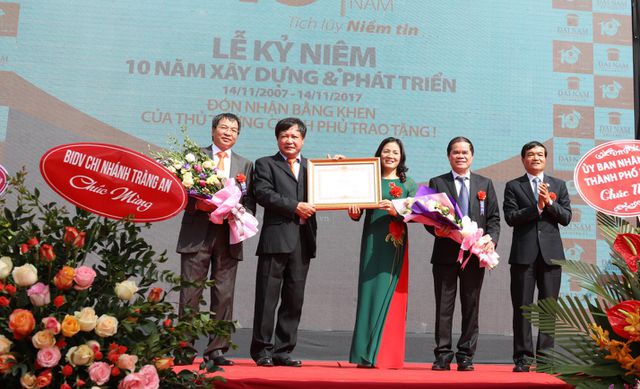
(1).jpg)
Dai Nam University was honored to receive a Certificate of Merit from the Prime Minister at the 10th Anniversary Ceremony of the school's founding (November 14, 2017).
3. Key indicators
3.1. Training
- By 2025, the school will open 3 to 5 new undergraduate training majors, 2 to 3 master's training majors and 2 doctoral training majors.
- The training scale of the School by 2025 is 10,000 students, including 1,000 postgraduate students.
- Training method combines centralized training and Elearning training. By 2025, 100% of subjects will have Elearning lectures and learning materials.
- Developing open educational resources system;
- By 2025, strive for 100% of graduates to have jobs in their field of study.
3.2. Scientific and technological research
The school focuses especially on scientific research (NCKH) and technology transfer in the field of public health protection and care.
Ensure the quality of scientific conferences, paying special attention to improving the quality and effectiveness of specialized seminars (national and international levels).
By 2025:
- 100% of full-time lecturers participate in scientific research, 50% of master's lecturers and 100% of doctoral lecturers have at least 1 scientific article published in a specialized journal/year or have reports presented at national (or international) scientific conferences and seminars and strive to have articles published in international journals.
- Publish 1 monograph each year and organize 1-2 national/international scientific conferences and seminars.
- Regularly publish research results on the School's website. This is a useful reference source for training and research.
- Establish and operate an effective in-depth research group. Build and develop 1-2 strong research groups.
Some other research indicators:
– School-level scientific research topics: 30 topics/year
– State-level scientific research topics: 01 topic/year
– Increase the rate of permanent staff participating in science and technology activities/topics: 08 staff/topic
– Increase the funding ratio for science and technology activities/staff to 10,000,000 VND/staff.
Strive to increase about 5% annually.
Developing a team of staff and lecturers, especially in terms of quality, with good moral qualities, capacity, knowledge and skills meeting international standards is the top priority of Dai Nam University.
3.3. Staff development
Developing a team of staff, especially in terms of quality, with good moral qualities, capacity, knowledge and skills meeting international standards.
The number of teaching staff accounts for 75% of the total staff and is at the ratio of 13 students/teaching staff (CBGD). The rate of teaching staff with postgraduate qualifications (SĐH) is 80-90%. The rate of scientific staff with doctoral degrees or higher is currently 30%, must reach 45% by 2020 and over 70% by 2030. The rate of staff with the academic title of Professor and Associate Professor will reach 30-35% of the total number of doctors by 2020.
Every year, 35-40 foreign lecturers and scientists come to teach and research at Dai Nam University.
100% of managers are trained and improved in professional qualifications, foreign languages and management capacity according to advanced university management standards; at least 25% of administrative managers are good at English in work and communication.
3.4. Quality assurance
- By 2020, Dai Nam University will have an internal quality assurance system that meets the standards of quality assessment (QA) of higher education institutions;
- By 2020, at least 10% of Dai Nam University's training programs will be self-assessed and/or accredited according to national standards;
- 10% of training programs under strategic missions that meet AUN's requirements will be accredited according to AUN's quality assurance standards before 2030.
- By 2025, Dai Nam University will be accredited according to the quality standards of the Asean University Network (AUN);
- By 2030, Dai Nam University will be fully accredited according to the process and meet AUN standards...
3.5. Modern facilities meet the needs of high-quality training and research
At present, the School is using well and effectively the School's facility at 1 Pho Xom, Ha Dong. Exploiting the School's facility at 56 Vu Trong Phung, Thanh Xuan as the Principal and for postgraduate training; 2nd degree, short-term training. There is a good information technology infrastructure, serving training and scientific research, each staff and student has an internal access account.
By 2025, complete the construction of 4 more large buildings at Dai Nam University complex in Pho Xom - Ha Dong - Hanoi including: 15-storey Rectorate building and lecture hall; 9-storey library, hall and lecture hall building; 15-storey student dormitory building; 9-storey building serving scientific research, practice, experimentation and technology transfer for the health sciences sector. The buildings are built according to high quality standards, equipped with modern and practical management and use systems.
By 2030, complete the construction of the entire Dai Nam University Complex at No. 1 Xom Street - Ha Dong according to the design approved by the Hanoi City People's Committee.
At present, the School is effectively using its facilities at No. 1 Pho Xom, Ha Dong.
3.6. Create sustainable financial resources
Create sustainable financial resources to basically meet the requirements of construction, development and building prestige with society.
III. STRATEGIC SOLUTIONS
1. Developing teaching, research and management staff
Plan the team to meet the development requirements until 2020 and 2030 in terms of quality and scale. Continue to implement the doctoral training program and apply policies to support staff in training, publishing research results, and attending national and international scientific conferences and seminars.
Improve the quality of life of our staff, lecturers and employees by creating high-income jobs, improving a friendly working environment, and implementing policies that provide opportunities for development and contribution to our staff.
2. Improve the quality and effectiveness of training
Focus on promoting credit-based training. Timely develop and implement new training programs in the direction of dual degrees and dual majors. Innovate the content and teaching methods of existing training programs. Innovate and update textbooks, learning resources, and use IT in teaching. Make fundamental adjustments to training programs, to be completed before June 2020, along with changes in training organization methods, teaching methods, and assessment and evaluation, and provide learning resources for learners.
Play a pivotal role in improving the quality of English teaching throughout the school.
Maintain the scale of postgraduate training currently being implemented in Hanoi to improve quality in the direction of enhancing practical application. Innovate training programs and improve management capacity according to national standards. Strengthen postgraduate training cooperation with foreign universities.
The school actively participates in university and postgraduate training projects, teacher training, and application of IT in foreign language teaching. It actively participates in quality assurance projects, foreign language teaching projects in the national education system, and high school and vocational school teacher development projects.
Training quality makes the "brand" of Dai Nam University.
3. Improve the quality and efficiency of scientific research work
Continue to gradually improve the management stages of the School's scientific and technological work towards clear output products, combining scientific research with training and fostering to improve the professional qualifications of the staff in parallel with the implementation of the School's common tasks. Promote scientific research cooperation with units outside the School, domestically and internationally, between units within the School and between individuals within a unit.
Ensure that each scientific research topic must result in an article published in a national or higher specialized journal or a report at a national or international scientific conference or seminar.
Effectively implement the program to build a team of staff to meet assigned tasks, especially the program to train young, specialized and leading staff of the School. Significantly improve the general level of the teaching staff and research staff.
Applying IT to build an open learning material system to serve training, scientific research and providing services to society. Building an electronic learning material base, providing Internet services for teachers and students. Promoting the posting of all information about the school's activities on the school's network, especially information about training and scientific research.
4. Improve quality assurance
Developing human resources for the internal quality assurance system; Completing the quality assurance network in Dai Nam University; improving capacity, fostering expertise and professionalism for staff working in quality assurance; widely disseminating the role and significance of quality assurance in implementing the mission of Dai Nam University to create consensus and attract all staff, lecturers and learners to actively participate in building and implementing a quality culture at Dai Nam University.
Accrediting the quality of training programs according to national and international standards. Reviewing and planning training programs according to the accreditation roadmap; prioritizing international accreditation and comparing programs under strategic tasks, high-quality training programs, and talent training; self-assessing the quality and registering for accreditation of programs according to AUN standards; comparing training programs according to core accreditation indicators of advanced universities.
5. Manage and use financial resources effectively.
Motto: "Whatever is necessary, no matter how big, will be spent; whatever is unnecessary, not a penny will be wasted."
6. Enhance the quality and effectiveness of international cooperation
Innovate management work towards specific output products. Establish training and scientific research relationships with foreign partners, student and scholar exchange programs.
Strengthen new international cooperation relationships to obtain more sources of scholarship funding, facilities, equipment, books and materials and brainpower for training and scientific research; increase exchange programs for lecturers and students. Find funding sources as well as research partners on the professional development needs of high school English teachers. Exploit all resources to ensure the number of foreign teachers teaching at the School every year. Focus on inviting short-term visiting professors with foreign funding to participate in teaching at the university level.
Exploiting and mobilizing funding sources and support from businesses to serve training and scientific research. Promoting the effectiveness of scientific research cooperation programs and exchanges with universities in countries such as Japan, the United States, China, Korea, etc.
Vietnamese language training for foreigners: Actively expand the exploitation of existing recruitment sources and expand other recruitment sources with highly competitive methods. Gradually increase the number of foreign students studying at the School.
Implement short-term staff exchange programs with Taiwan, Thailand, Korea, China... Implement student and pupil exchange programs based on the spirit of voluntary student contribution with all countries whose languages are taught at the School.
The development strategy of Dai Nam University to 2025, with a vision to 2030, is implemented through 5-year plans and is specified into the school's annual plans and tasks.
IV. IMPLEMENTATION ORGANIZATION
The development strategy of Dai Nam University to 2025, with a vision to 2030, is implemented through 5-year plans and is specified into the school's annual plans and tasks, widely disseminated to each department, office, center, faculty and affiliated departments throughout the school.
Units in the School develop their own annual plans and tasks based on the general plans and tasks of the School and organize the implementation of the proposed plans. Trade Unions, Youth Unions, and Student Associations proactively and creatively develop action plans to implement the Development Strategy of Dai Nam University.
Every year, the School organizes an assessment of the implementation of the Strategy (on the occasion of the staff conference and the year-end summary), on that basis, it determines and adjusts the School's goals and targets for the following school year to suit reality.
By 2025, a comprehensive assessment of the School's Strategy will be conducted, serving as a basis for developing and implementing the Development Strategy for the next phase.
Chairman of the Board of Directors, Dr. Le Dac Son
Register for admission consultation 2025
scholarships and tuition support worth up to 55 billion VND

scholarships and tuition support worth up to 55 billion VND

